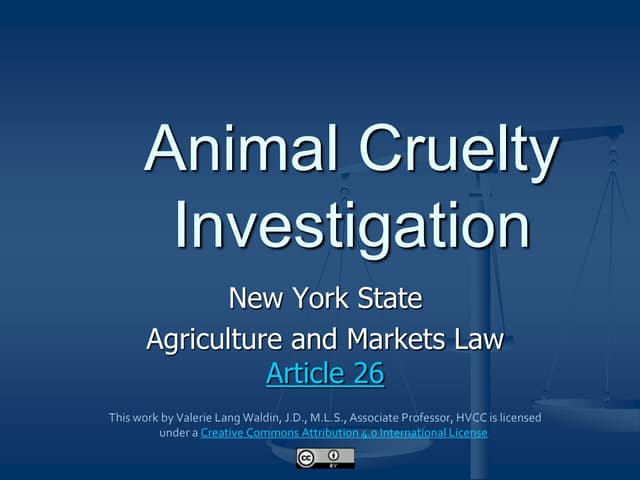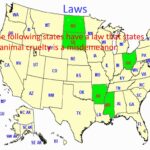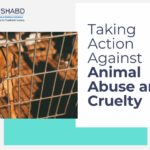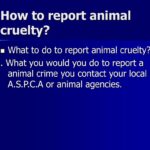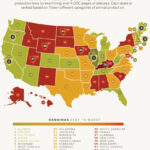Animal cruelty is an abhorrent violation of not only the rights of animals but also societal ethics focused on compassion and empathy. In New York State, the legal framework addressing animal cruelty is encapsulated primarily within the Consolidated Laws under the New York State Penal Law. Specifically, Article 353, which outlines various offenses related to the mistreatment, neglect, and exploitation of animals, serves as the cornerstone of animal protection in the state.
Within this article, there exists a spectrum of crimes categorized into distinct levels, each reflective of the severity of the offense and its consequences. Understanding these categories is essential for both animal advocates and the general populace, as it underscores the legal recourse available to combat the alarming prevalence of animal cruelty.
The first category is aggravated cruelty to animals. This offense is defined under Penal Law § 353-a and is positioned as a Class E felony. Individuals found guilty of this offense have intentionally inflicted serious physical injury on an animal or engaged in acts that demonstrate extreme indifference to the animal’s well-being. This includes but is not limited to beating, burning, or otherwise torturing an animal. The law emphasizes intent, illustrating that such egregious acts are not only criminal but also indicative of a greater moral failing.
Next, we examine overdriving, torturing, and injuring animals, which falls under Penal Law § 353. This section delineates actions that may not reach the misanthropy of aggravated cruelty but still entail significant abuse or neglect. This includes acts such as failing to provide proper sustenance or shelter, which can lead to suffering and, in severe instances, death. This is categorized as a Class A misdemeanor, reflecting the law’s recognition of the importance of humane treatment and basic care.
In addition to these direct acts of cruelty, the law also addresses neglect specifically. Failure to provide adequate care, whether that be food, water, or necessary veterinary treatment, can result in criminal charges. Cruelty due to negligence is a glaring reminder that oversight in animal husbandry can lead to dire consequences. Individuals responsible for animals must be alerted to their duty to provide a standard of care defined by the law, underscoring a collectively recognized standard of animal welfare.
A crucial component of understanding this legal framework involves recognizing the role of enforcement. In New York State, humane law enforcement officers, who are often affiliated with local humane societies, are empowered to investigate claims of animal cruelty. They serve as a pivotal link between the law and the protection of animal rights, demonstrating the necessity of vigilance within communities. Routine inspections and responses to public reports of cruelty underscore a collective responsibility to uphold the legal statutes designed to protect our vulnerable counterparts.
Furthermore, the penalties for violating these laws can extend beyond monetary fines and imprisonment. Offenders may also face the loss of their right to own animals in the future, which serves not only as a punitive measure but as a form of deterrence. The implementation of mandatory rehabilitation programs or counseling as part of sentencing further underscores the understanding that many who commit acts of cruelty may need intervention to address underlying issues, whether psychological or behavioral.
Additionally, an important element of New York’s statutory framework is the provision for animal fighting
Moreover, it is vital to understand the legal definitions of terms associated with animal cruelty offenses. Terms such as “animal,” “person,” and “owner” are defined within the law and help clarify the applicability of these statutes. An “animal” is broadly defined, which includes not only domesticated pets but also any sentient creatures under human control. Another critical aspect accompanying discussions on animal protection laws is the outreach and advocacy undertaken by numerous organizations dedicated to animal rights. These entities often work in tandem with legal authorities to facilitate education about the laws, engage in preventative measures, and actively promote the humane treatment of animals through widespread campaigns. Their efforts illuminate the shared societal obligation to foster an environment in which animal welfare is prioritized. In conclusion, the enforcement of Article 353 of the New York State Penal Law represents a comprehensive effort to address and combat animal cruelty. Comprehensive understanding of the various categories of offenses aids in the vigilance required to protect animals. Legal definitions, enforceability, and community involvement all coalesce to establish a robust system aimed at safeguarding the well-being of animals. Public awareness and advocacy for stronger protections will ensure a cohesive community effort to maintain the legal and moral standards that honor the rights of animals. It is through diligence, action, and compassion that society can strive to eradicate animal cruelty once and for all.
